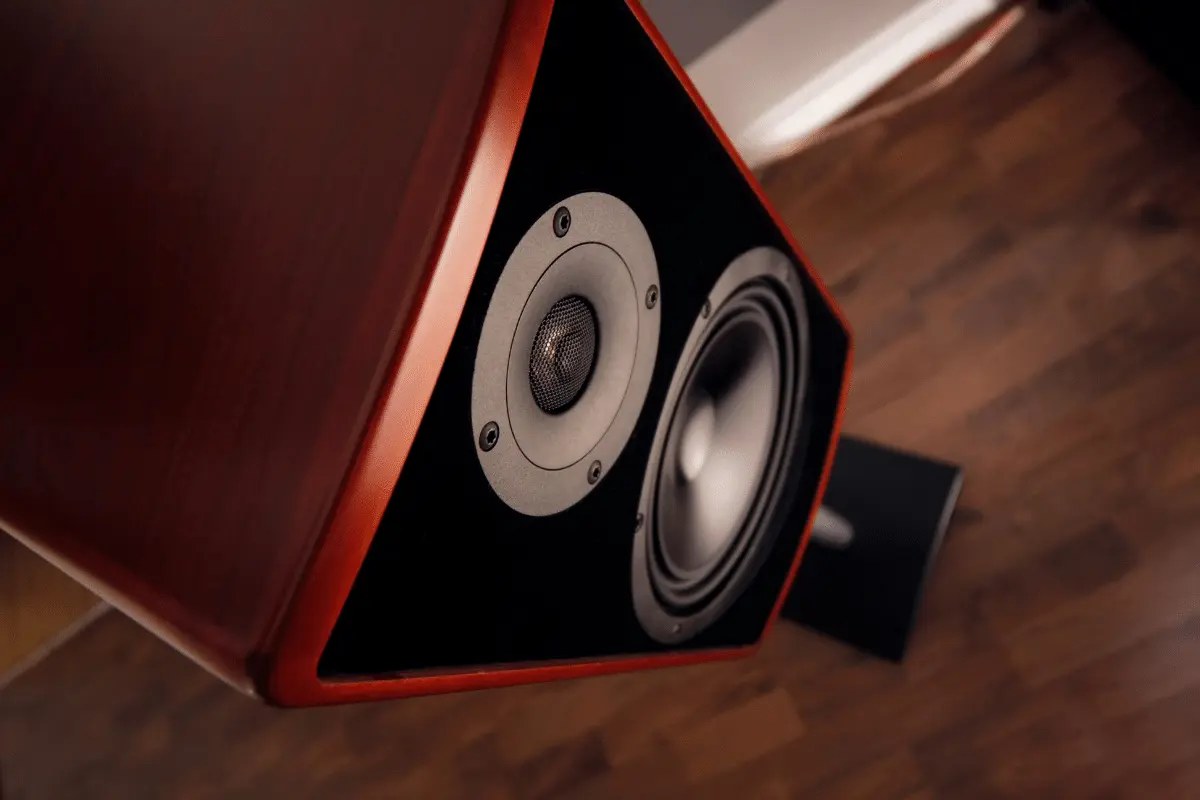If you’re a regular headphone user, you may have stumbled upon bone conduction headphones. In recent years, they’ve been gaining popularity since they allow you to listen to audio without blocking your ear canal.
Instead, they send vibrations through your cheekbones and into your inner ears, resulting in an incredibly unique listening experience.
However, as with any new technology, concerns about its potential adverse effects arise. One such concern is whether bone conduction headphones can cause migraines.
In this post, we’ll delve into the science behind migraines and explore whether bone conduction headphones are a trigger or not.
Understanding Bone Conduction Technology
Understanding Bone Conduction Technology is essential to comprehend how bone conduction headphones work.
As previously stated, bone conduction technology bypasses the outer ear and uses vibrations to transmit sound directly to the inner ear.
This technology has been used in hearing aids for decades but has now made its way into the headphone market.
By placing the headphones on your cheekbones, vibrations travel through your skull to your inner ear, allowing you to hear your music.
It’s important to note that while bone conduction headphones are a great alternative to traditional headphones, they do not completely eliminate outside noises.
This means that if you’re listening to music at a high volume, you may still be able to hear outside noises, which could potentially lead to hearing damage.
The good news is that bone conduction technology is safe to use with no significant evidence suggesting that it can cause headaches or migraines.
However, improper usage, such as listening to music at excessively high volumes, could lead to vertigo and other related issues.
Therefore, it’s essential to use these headphones responsibly and make sure you take breaks if you’re using them for an extended period.
Can bone conduction headphones cause migraines
While bone conduction headphones may be a great alternative to traditional earbuds, they can also cause certain issues.
One potential problem is migraines. While any type of headphones can cause headaches, prolonged use of bone conduction headphones can exert a slight amount of pressure on the head, leading to discomfort and headaches.
Additionally, cases studies and user testimonies have shown that bone conduction headphones can trigger or aggravate vertigo, which can also lead to migraines.
It is important to note that those who are susceptible to migraines and vertigo should avoid using bone conduction headphones.
However, with proper usage and monitoring of volume levels, these headphones can provide a unique listening experience without causing discomfort.
How Sound Travels through the Jawbone
When it comes to bone conduction headphones, the sound travels through the user’s jawbone rather than directly into their ear.
This unique method of sound transmission can offer benefits such as being able to still hear their surroundings while listening to audio.
However, this technology can also cause headaches and possibly lead to hearing loss. The bones in the user’s skull vibrate to amplify sound waves, which are then passed through to the middle ear.
It’s important to consider the potential risks of prolonged exposure to sound transmitted through the jawbone, and to use these headphones in moderation.
While bone conduction headphones may offer convenience and unique features, it’s essential to prioritize the health of one’s hearing.
Inner Ear Function and Hearing Loss
The inner ear is a vital part of the human auditory system, responsible for detecting and transmitting sound signals to the brain.
This complex organ is made up of several distinct parts, including the cochlea, which converts sound waves into electrical signals, and the vestibular system, which helps maintain balance and spatial orientation.
With sustained exposure to loud sounds, the delicate nerve cells and hairs inside the inner ear can become damaged and lead to hearing loss.
Bone conduction headphones can be a safer alternative to air conduction headphones since they do not cut off outside noise and pressure.
However, it’s important to be mindful of the volume and duration of use to prevent damaging the inner ear and suffering from hearing loss.
Impact of Conductive Hearing Loss on Daily Life
Conductive hearing loss can significantly impact daily life. It makes it difficult to understand conversations or participate in group discussions.
Simple tasks such as answering the phone or following a news broadcast become challenging. In such cases, bone conduction devices (BCDs) can provide a useful alternative to traditional hearing aids.
BCDs transmit sound waves through the bones of the skull directly to the cochlea, bypassing any obstruction in the middle or outer ear.
They are effective in people with conductive hearing loss caused by middle or outer ear damage. By restoring hearing, bone conduction technology can help alleviate the social and emotional impacts of hearing loss, such as isolation and depression.
The open-fit design of most BCDs allows people to hear ambient sounds, improving their awareness of their surroundings.
Bluetooth connectivity also makes it easy to stream music, phone calls, or other audio content, making bone conduction devices a convenient and practical choice.
Effects of Hearing Loss on Young Children
Children with hearing loss may struggle with communication, socialization, and learning. They may have difficulty understanding words, recognizing sounds, and speaking clearly.
This can lead to frustration, anxiety, and academic struggles. Without proper intervention, hearing loss can impact a child’s development and quality of life.
Using bone conduction headphones may be a helpful tool for children with hearing loss, especially those with conductive hearing loss, as it allows for better sound transmission through the skull.
However, it is important for parents and caregivers to monitor the volume and frequency of use to avoid potential hearing damage.
Working with a healthcare professional to diagnose and treat hearing loss can greatly improve a child’s overall well-being and success in life.
Vestibular Organ Damage from Pressure Changes
Vestibular organ damage from pressure changes is a serious concern for users of bone conduction headphones.
The design of bone conduction headphones allows for sound to bypass the ear canal and directly stimulate the inner ear through the jawbone, which in turn can cause changes in pressure and impact the vestibular organ.
This disruption can result in a range of symptoms, from dizziness and vertigo to nausea and headache.
It is important to note that not all users will experience these symptoms, as the severity and frequency can vary based on individual physiology.
However, it is important for users to be aware of the potential risks of using bone conduction headphones and to take precautions, such as taking breaks and adjusting the volume, to minimize the risk of vestibular organ damage.
Relationship between Sound and Body Functions
The relationship between sound and body functions is a complex one, and bone conduction headphones can impact this relationship.
As previously discussed, these headphones transmit sound vibrations through the bones in the skull, bypassing the ear canal and eardrum.
This can have an effect on the inner ear and its function, including the vestibular organ responsible for balance and spatial orientation.
The vibrations can also cause changes in pressure within the ear, potentially leading to damage or discomfort.
Additionally, prolonged use of bone conduction headphones can contribute to hearing loss, as the conductive pathway may not be as effective as traditional auditory pathways.
While the benefits of bone conduction headphones are clear, it’s important to understand the potential impact on the body’s sensory and auditory systems.
Inner Ear Disorder and Symptoms
Inner ear disorders can cause a wide range of symptoms, including vertigo, tinnitus, and hearing loss.
These symptoms can significantly impact a person’s quality of life, making it difficult to perform daily activities and communicate with others.
When using bone conduction headphones, the vibration and pressure exerted on the inner ear can exacerbate existing inner ear disorders and cause new symptoms to develop.
It is important for individuals with inner ear disorders to talk to their healthcare provider about the potential risks and benefits of using bone conduction headphones, as well as to monitor their symptoms closely when using them.
By being aware of the potential risks and taking steps to manage symptoms, individuals can still enjoy the benefits of bone conduction headphone technology while prioritizing their hearing health.
Other Health Issues Related to Bone Conduction Headphones
Besides causing migraines and vertigo, there are a few other health issues associated with the use of bone conduction headphones.
If not used properly, they can cause discomfort or even pain in the jaw and the area around it.
Additionally, if worn for extended periods of time, they can cause pressure changes within the inner ear, which can result in symptoms like tinnitus or a feeling of fullness in the ear.
Moreover, bone conduction headphones can cause interference with equipment that relies on electronic waves, such as pacemakers, so it is important to consult with a doctor before using them if you have any medical conditions.
However, overall bone conduction headphones are considered to be safe and an innovative solution for those who want to enjoy music or audio while keeping their ears open to the surrounding environment.
It’s important to be aware of the potential risks and use them in moderation to avoid any health issues.
Conclusion
In conclusion, while bone conduction technology may have some advantages for hearing, it is not without its potential drawbacks.
The use of bone conduction headphones may lead to pressure changes and damage to the vestibular organ, which can cause symptoms like migraines and headaches.
Additionally, prolonged use of headphones can put pressure on the head, leading to scalp and inner ear compression and headaches.
It is important to understand the relationship between sound and body functions, especially when it comes to hearing technologies like bone conduction headphones.
In light of these potential health risks, it is recommended that individuals take breaks from wearing headphones, use them in moderation, and seek medical attention if they experience any concerning symptoms.





Leave a Reply
You must be logged in to post a comment.